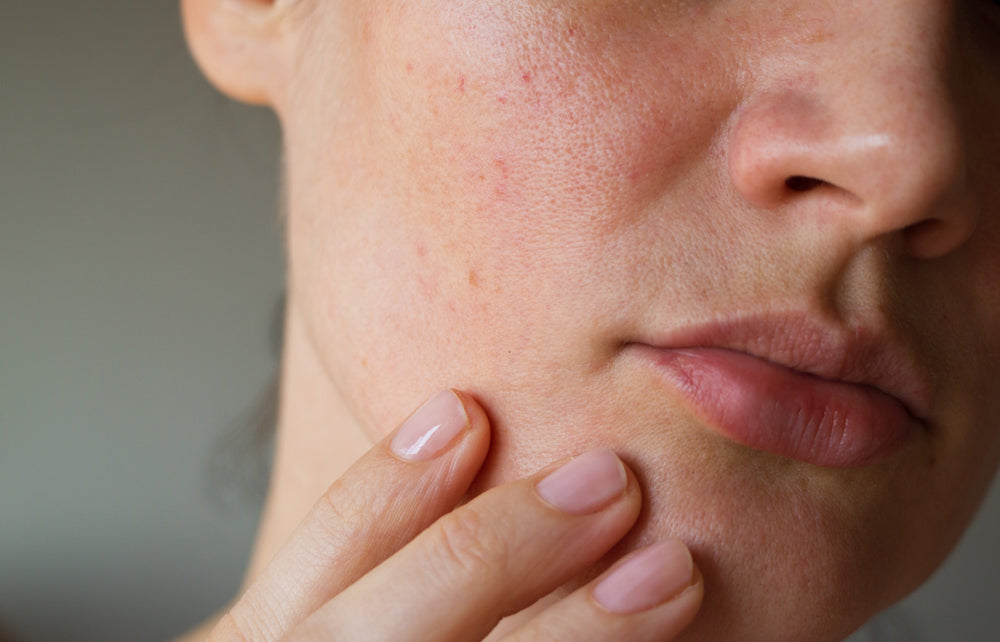How to Chemically Exfoliate Body for Silky Skin?
If youre a beautician seeking to refine the art of skincare, understanding how to chemically exfoliate body is essential. As new trends in body care emerge, chemical exfoliation stands out for its effectiveness in achieving smooth, glowing skin. This article will delve into the intricacies of chemical exfoliation, offering a comprehensive guide that will elevate your beauty practice.
Chemical exfoliation involves the use of acids or enzymes to remove dead skin cells and promote cellular renewal. This process is crucial for clients looking to maintain their skins health and appearance, especially in today's world where pollution and stress can take a toll on dermal vitality. This guide is tailored for beauty professionals eager to expand their knowledge and skills.

What is Chemical Exfoliation?
Chemical exfoliation is an advanced technique that utilizes specific chemicals to aid in skin cell turnover. Unlike physical exfoliation, which uses scrubs or brushes, chemical methods penetrate the skin to dissolve dead cells, revealing fresh, new skin underneath. This method can also help address various skin concerns such as dullness, uneven skin tone, and texture issues.
Types of Chemical Exfoliants
Before diving into the how-to section, it's crucial to familiarize yourself with the different types of chemical exfoliants commonly used. Understanding these will help you choose the right product for your clients:
- AHAs (Alpha Hydroxy Acids) - Derived from fruits and milk, AHAs are water-soluble and are ideal for surface exfoliation. They help to improve skin texture and moisture content. Examples include glycolic acid and lactic acid.
- BHAs (Beta Hydroxy Acids) - Oil-soluble acids like salicylic acid penetrate deeper into the pores, making them suitable for oily and acne-prone skin.
- Enzymes - Naturally derived enzymes from fruits like papaya or pineapple break down dead skin cells gently, ideal for sensitive skin types.
Preparing for Chemical Exfoliation
Preparation is key when it comes to chemical exfoliation. Here are some steps to follow:
- Assess Skin Type: Conduct a thorough skin assessment for your clients. Understanding their skin type will help you determine the appropriate exfoliant to use.
- Patch Test: Always perform a patch test to ensure your client doesnt have an adverse reaction to the chemical exfoliant.
- Consultation: Discuss with your clients their skin concerns and desired results. Setting realistic expectations is essential for client satisfaction.
How to Chemically Exfoliate Body
Now that you've prepared, let's walk through the process of how to chemically exfoliate body effectively:
1. Choose the Right Product
Select a chemical exfoliant based on your client's skin type and concerns. Products with higher concentrations of AHAs and BHAs are suitable for stubborn issues, while gentle formulas are better for sensitive skin.
2. Cleanse the Skin
The first step in any exfoliation process is to cleanse the skin. Ensure your clients skin is free from makeup, oils, or any other products that might hinder the exfoliant's effectiveness.
3. Apply the Exfoliant
Using a cotton pad or gloves, apply the chemical exfoliant evenly over the body. Make sure to follow the manufacturer's instructions regarding application and timing. Avoid areas with active skin issues or broken skin.
4. Allow Time to Work
Let the product sit for the designated duration. During this time, monitor your client's comfort level and educate them on what sensations to expect a mild tingling or slight warmth is normal.
5. Neutralize and Rinse
Once the time is up, gently rinse the product off with lukewarm water. This step is important to halt the chemical action of the exfoliant.
6. Moisturize
Always finish with a soothing moisturizer to hydrate and protect the newly exposed skin layers. This step is crucial, especially since chemical exfoliation can leave the skin slightly sensitive.
Post-Exfoliation Care
Educating clients on post-exfoliation care is just as important as the treatment itself. Here are some essential tips:
- Sun Protection: Reinforce the importance of sunscreen, as newly exfoliated skin is more vulnerable to sun damage.
- Avoid Harsh Products: Advise clients to steer clear of strong active ingredients for a few days post-treatment. This includes retinols, scrubs, or any harsh cleansers.
- Hydrate: Encourage them to maintain a good hydration routine to support skin recovery.
Common Mistakes to Avoid
In your practice, it's essential to steer clear of common pitfalls to ensure safety and effectiveness:
- Over-Exfoliating: Ensure that your clients do not use chemical exfoliants too frequently. This can lead to irritation and compromised skin barrier.
- Neglecting Skin Type: Always cater your products and methods to fit your client's particular skin type.
- Ignoring Aftercare: Failing to advise post-exfoliation care can lead to adverse effects on your client's skin.
Understanding Exfoliation Myths
Education is key when addressing client concerns. Common myths such as 'more exfoliation equals better results' can lead to over-treatment. It's vital to clarify these misconceptions during consultations.
Further Resources
For an in-depth understanding, we recommend checking out articles such as How to Exfoliate and Exfoliate for Soft Skin. These resources provide valuable insights into proper exfoliation techniques.

Frequently Asked Questions
- How often should I chemically exfoliate my body? Its generally recommended to exfoliate every 4-6 weeks, but you should tailor this to your client's skin sensitivity and concerns.
- Can I use chemical exfoliants on sensitive skin? Yes, but choose gentle formulas and perform a patch test to ensure there are no adverse reactions.
- What should I avoid after a chemical exfoliation treatment? Clients should avoid sun exposure, harsh skincare products, and intense workouts for at least 24 hours.
For further information on related topics, you might want to read about Exfoliation Before Self-Tan or Exfoliating Before Shaving. These articles enhance the understanding of the overall exfoliation process.

